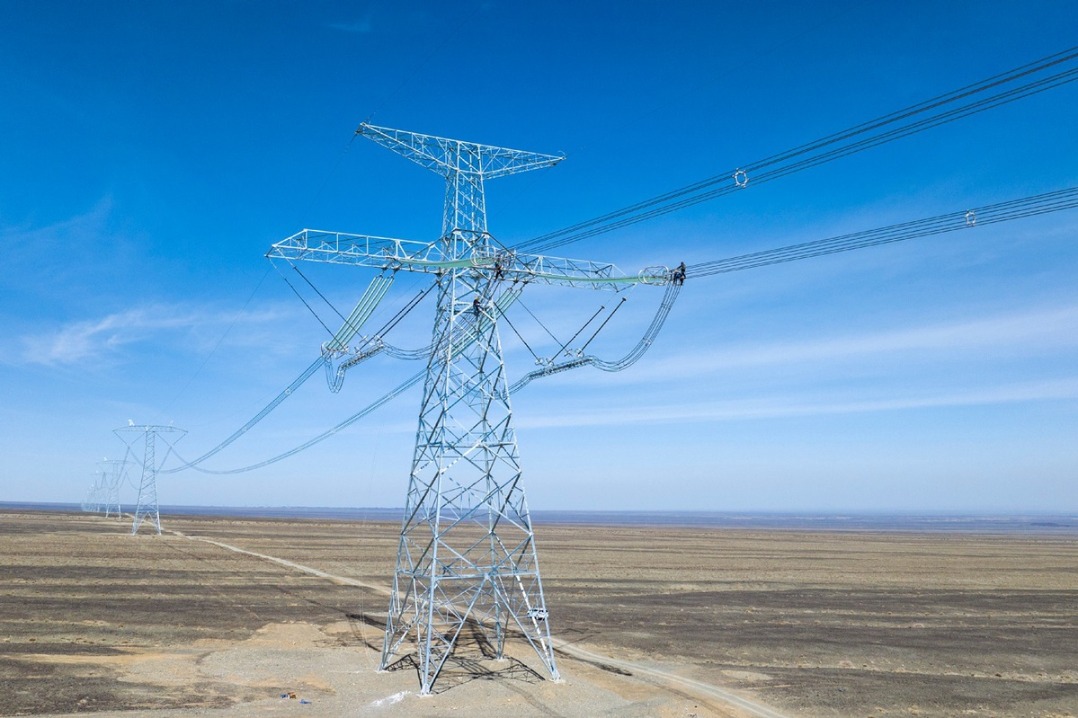Holistic security shaping


LI MIN/CHINA DAILY
China needs to adopt a perspective in relation to its neighborhood diplomacy, paying attention to the interactions between countries, subregions and the region as a whole
China's surrounding environment possesses distinct characteristics of its own, and the prosperity and stability of its neighborhood are of critical importance to China, particularly as the current United States-China strategic competition focuses on China's neighboring areas.
As highlighted by the Central Conference on Work Related to Neighboring Countries held in Beijing in April, China's vast territory and long borders make its neighborhood a vital foundation for national development and prosperity, a key front for safeguarding national security, a priority area in the country's overall diplomacy, and a crucial link in building a community with a shared future for humanity.
China's neighboring security environment is closely intertwined with transformations in the international landscape. Changes in the international order have consistently been a significant variable shaping China's surrounding security dynamics. From around 2010 to the present, the shift in the US' policy toward China, from a mix of competition and cooperation to comprehensive strategic rivalry, has driven the restructuring of the regional order around China. This has led to changes in the security perceptions and strategies of most neighboring countries, the intensification of the regional arms races, the re-escalation of security hotspots, and an unavoidable shift in the focus of regional affairs back to security issues.
China's neighborhood security environment is not a mere patchwork of individual nations or subregions, but rather a complex, dynamic and interconnected system woven from multiple layers and elements.
China's neighborhood security situation exhibits a three-tiered nested structure of "nation-subregion-region".
At the national level, there are major regional states (or groupings), each with its own security outlook, strategic posture and policies toward China. These include India, Indonesia, Japan, Kazakhstan, the Republic of Korea and Russia, as well as the Association of Southeast Asian Nations. These neighboring countries have vast disparities in development levels, and their security policies and stances are in constant flux. This requires a deep understanding of these nations' specific conditions, strategic cultures and security outlooks. For example, in Southeast Asia, concepts such as "unity in diversity", "centrality" and "inclusive development" have shaped the security views of the ASEAN member states. This determines their consistent reliance on ASEAN, adherence to a balance of power among major nations, refusal to "choose sides", and commitment to the "ASEAN Way".
The subregional level concerns China's security interactions with specific subregions. Due to differing geographical and historical conditions, security dynamics vary significantly across subregions. Currently, Northeast Asia is deeply entrenched in bloc confrontation; South Asia is influenced by India's regional dominance and its growing alignment with the US; Central Asia is witnessing intensified multistate competition triggered by the Ukraine crisis; and Southeast Asia is striving to maintain ASEAN centrality and strategic autonomy.
The regional level involves the overall regional security architecture in China's neighborhood. This level focuses on the region as a whole — its security institutions, dominant security order and interactions with the broader international environment. For example, the global confrontation between the US and the Soviet Union during the Cold War profoundly impacted the neighboring region. Similarly, the ongoing US-China rivalry is reshaping the neighborhood security order.
These three levels do not exist in isolation but interact and evolve in an intertwined manner. Within this dynamic process, regional powers such as ASEAN, India, Japan and Russia play pivotal roles as strategic hubs. ASEAN strives to guide the regional dynamics by reinforcing its centrality; India wants to consolidate its dominant position in South Asia; Japan leverages its alliance with the US to deeply engage in Northeast Asian security affairs; and Russia seeks to maintain its influence in Central Asia primarily through the Collective Security Treaty Organization.
Currently, the US-China strategic competition has become a critical variable reshaping the neighborhood security architecture. US allies such as Japan, the ROK and the Philippines have adjusted their security strategies to align more closely with the US. Southeast Asian countries, for their part, have repeatedly indicated that the China-US competition is the most consequential external factor affecting their security.
It must be emphasized that China's neighboring countries are not merely passive recipients in the great-power rivalry but are actively striving for strategic autonomy. For example, ASEAN not only consolidates its "centrality" by encouraging major powers to align with the ASEAN Outlook on the "Indo-Pacific" and deepening multilateral dialogue mechanisms, but also seeks to explore a "third way" with extra-regional countries to enhance its agency and voice in regional affairs. The combined strength of these smaller and medium-sized states will have a significant impact on the future direction of the region's security order.
Finally, unforeseen events and security flashpoints can disrupt the hierarchical boundaries, triggering systemic shocks. Black swan events such as the COVID-19 pandemic and the Ukraine crisis have exerted comprehensive and long-term impacts on the security environment surrounding China. Regional flashpoints such as the South China Sea disputes and the Democratic People's Republic of Korea's nuclear issue exhibit spillover and "broken-window" effects — once escalated, conflicts may rapidly proliferate, destabilizing the entire neighborhood security environment.
As China's national strength continues to grow, its role in regional affairs has undergone a fundamental transformation. In the past, China was more often a passive actor, making strategic choices in response to changes in its surrounding environment. Today, China has become a primary shaper of the regional security landscape. This shift implies that, as a major power, when formulating and implementing neighborhood policies, China must place greater emphasis on policy stability and foresight, enhancing mutual trust and consensus, and working jointly to build a community of shared future with neighboring countries. Through initiatives such as the Belt and Road Initiative and platforms such as the Shanghai Cooperation Organization, the Lancang-Mekong Cooperation mechanism, and the co-building of the Regional Comprehensive Economic Partnership, China has not only supported regional stability, but also increasingly influenced the strategic choices of neighboring countries.
China and its neighboring countries enjoy geographical proximity, cultural affinity and integrated interests. Inescapably, they have a shared future. A key conclusion of the recent Central Conference on Work Related to Neighboring Countries is that China's relations with its neighboring countries are currently at their best in modern times. This affirms the positive supporting role of the neighborhood environment for China and the strategic window of opportunity it faces. The multilayered structure of the neighborhood security environment means that when handling neighborhood security affairs, China must not only strive for a "one country, one policy" approach based on the differences among neighboring countries, but also adopt a holistic perspective, paying attention to the interactions between countries, subregions and the broader region, and ensuring coherence and coordination in its overall policy planning.
This is particularly crucial now, as the neighborhood region is currently at a strategic turning point, facing a choice between two paths: "cooperation or confrontation, unity or division". Therefore, China must proactively shape the neighborhood order, refine the connotations of an "Asian security model", strengthen strategic mutual trust and work together with neighboring countries to build a community with a shared future.
Guo Jiguang is an assistant professor at the National Institute of International Strategy at the Chinese Academy of Social Sciences. Zhang Jie is a professor at the National Institute of International Strategy at the Chinese Academy of Social Sciences. The authors contributed this article to China Watch, a think tank powered by China Daily.
Contact the editor at editor@chinawatch.cn.


































